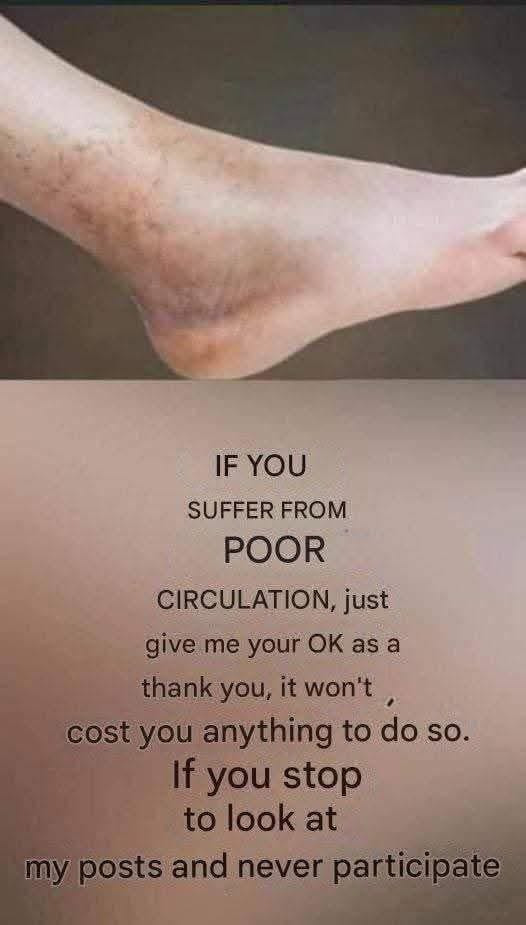ADVERTISEMENT
Poor circulation is a common issue—especially for those who spend long hours sitting, standing, or simply not moving enough. If you’ve ever experienced cold feet, heavy or aching legs, or numbness and swelling, you’re not alone. These are hallmark signs of reduced blood flow to the lower body, and while often dismissed as “just getting older” or “being tired,” they can signal underlying health concerns.
The good news? You can take steps today to improve circulation, relieve symptoms, and protect your long-term vascular health—without expensive treatments or invasive procedures.
🔍 What Causes Poor Circulation in the Legs?
Common Causes Include:
-
Sedentary lifestyle: Prolonged sitting or standing can reduce venous return from the legs.
-
Smoking: Damages blood vessels and reduces overall circulation efficiency.
-
Obesity: Extra weight puts pressure on veins and impairs blood flow.
-
Aging: Blood vessels naturally lose elasticity over time.
-
Medical conditions: Diabetes, high blood pressure, high cholesterol, and heart disease are all major contributors.
🚨 Common Symptoms of Poor Leg Circulation
If you’re experiencing any of the following symptoms regularly, your circulation may be compromised:
1. Swelling (Edema)
Fluid buildup in the lower legs, ankles, or feet often indicates sluggish circulation or weakened veins.
2. Cold Legs, Feet, or Toes
Even in warm weather, poor blood flow can leave your extremities feeling icy.
3. Heaviness or Aching
4. Tingling or Numbness
Reduced blood flow can lead to that familiar “pins and needles” sensation or occasional numbness.
5. Visible Vein Changes
Varicose veins or spider veins can signal underlying venous insufficiency or weakened vein walls.
✅ How to Improve Circulation in Your Legs – Simple, Effective Solutions
see continuation on next page
ADVERTISEMENT
